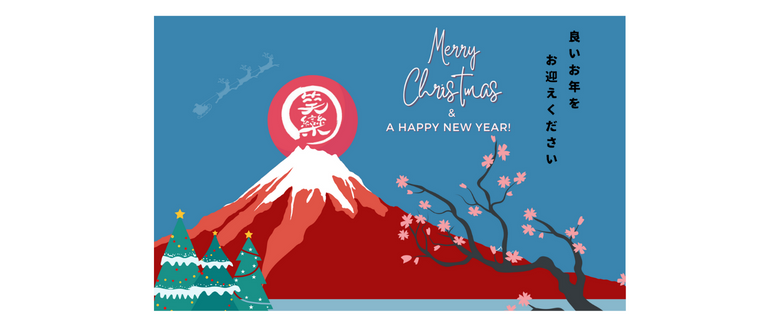🎍🎅Wishing you a happy holiday season🎅🎍

Dec 13 2022 0 Comments
Hi everyone, we hope you are doing well and excited about the holidays!

When I lived in the United States, I saw Christmas was celebrated by going to church and having a Christmas dinner with family. New Year's on the other hand was celebrated more with friends and couples.
It is quite opposite in Japan.
Christmas Eve is celebrated more with romantic dates and going out with friends than with family gatherings.
Let's talk about new years in Japan. New Year's is one of Japan's biggest holidays. It is officially celebrated from January 1st through the 3rd, but the new year vibe starts around December 27th and it goes on until around January 7th.
Here are some of the many things how to celebrate New Year in Japan.
1. Osouji-(deep cleaning)

Just before the very end of the year, Japanese people participate in what is commonly known as “osouji,” a deep cleaning of one’s household that is highly believed to cleanse the home and purify the residence to welcome “Toshigami,” the kami (Shinto deity) of the New Year.
2. Mochitsuki (rice cake pounding)

Mochi pounding is usually held on December 28 or December 30.
The 29th is called "bitter" and is considered unlucky because the number nine is associated with suffering. On the contrary, some temples hold mochi pounding on this day, saying that it brings good fortune (29 fuku).
The 31st is called "ichiyamochi," or "overnight rice cake," and is considered bad luck because the rice cakes do not firm up properly and the two layers of Kagamimochi would sink.
・Mochi is used to make Ozoni and is usually eaten on the morning of New Year. Finishing Ozoni is believed to bring good luck and longevity.
・Mochi is also used to make Kagamimochi. It is dived up into small portions and two pieces are set aside to become part of the Kagamimochi (鏡餅), a pair of round mochi the size of plates stacked on top of each other as an offering for the New Year. It is usually decorated in homes until January 11th or 15th in some areas.
3. Toshikoshi Soba (year-crossing noodles)

Toshikoshi soba is usually eaten on New Year's Eve just before midnight. Here are some of the reasons for this.
- To enjoy a fulfilling, peaceful life with every slurp of the long noodles.
- To break free from the past.
- To gather strength and resilience like the tough buckwheat crop.
- To grow your fortune just as buckwheat flour was once used by goldsmiths to gather leftover gold dust.
4. Joya no Kane

Beginning around midnight on New Year's Eve, the great hanging bells found in Buddhist temples all over Japan are simultaneously tolled exactly 108 times. Each strike represents the renunciation of one of the 108 earthly desires of human beings so that it is possible to begin the New Year afresh.
5. Osechi (new year's food box)

Osechi is a traditional New Year’s holiday food box in Japan. Jubako (stackable boxes) filled with long-lasting food items were prepared by December 31 for consumption over the first three days of the year.
6. Hatsumode (visiting shrines/temples)

In the first days of the new years, people in Japan go to the shrines or temples to appreciate the last year’s health and happiness and to pray for another good year.

We all love to spend these special holidays with families and friends, sometimes with co-workers.
We wish you a happy, healthy and joyful holiday season, everyone!
0 Comments




Leave a Comment